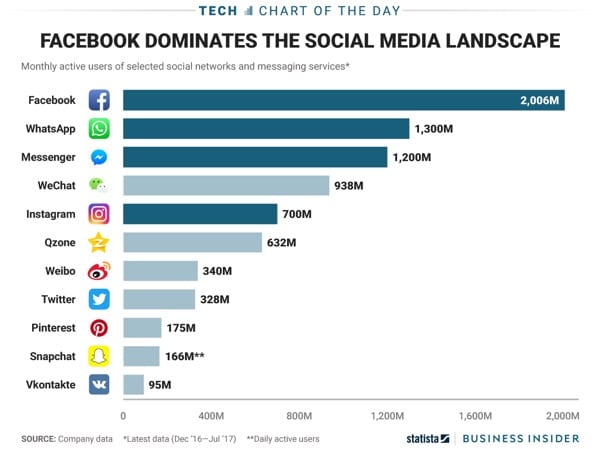We’ve all heard about the power and the importance of social listening in one way, shape or form. But in 2017 (almost 2018), does social listening still hold the same weight as it once did?
Before we dive into social listening, it’s important to define what we’re classifying as social listening. Social listening is the process of monitoring digital conversations to understand what customers are saying about a brand and industry online. This process is facilitated through the use of third party software to help with aggregating data through platform APIs.
As of December 2017, social listening software predominately relies on social and digital media data that is publicly available. Publicly available sources of data include Twitter, blogs, forums, websites, and Reddit. Private data sources cannot be pulled into these tools and analyzed. Private social media sources include Facebook, Instagram and Snapchat (all ephemeral data for that matter).
Are you starting to see a bit of an issue with this approach…
What are the most popular social media platforms? You guessed it, Facebook, Facebook Messenger and Instagram are the global players. That means that these platforms have the highest monthly active users and time spent on platform.
With the highest monthly active users, you can expect that there are a ton of conversations and information sharing occurring on these platforms. It’s relatively safe to assume that there is a treasure trove of insights, just waiting to be uncovered. Current social media listening cannot mine for these insights, so is it wise to make decisions based on incomplete data? Probably not.
How do we access this private or “dark” social media data to extract insights?
- Manually mine your brand or company Facebook and Instagram pages: look at the reactions, comments and shares pertaining to your content.
- Look at competitor Facebook and Instagram accounts.
- Search Facebook or Instagram using brand, industry or product specific hashtags.
- Create content on these platforms that asks for feedback. Consider incentivizing your audience to participate.
- While not considered dark or private data, it’s important to remember that a large portion of social media users are observers, opting to consume information without interacting. Be careful not to pivot to cater to the needs of a vocal minority, validate what the data is telling you!
Once you’ve collected all of your social media data, it’s always a good idea to validate some of the hypotheses that you have using:
- Traditional quantitative and qualitative methods (phone and email surveys, focus groups, in-depth interviews).
- Third party data and research (Ipsos and Emarketer are a great starting point).
- Email your existing clientele.
- Remember that no tool or software platform is going to generate insights and conclusions, you still need people to conduct analysis and validation.
Before you rely solely on social media listening data for your next strategy, product roll-out or customer service response, consider that you’re only really getting a portion of the conversation. Explore all sources of data manually in addition to social listening to really understand your space in greater detail. We never want businesses to make decisions based on incomplete data. Turn the volume up on your social media listening and dominate the competition.
